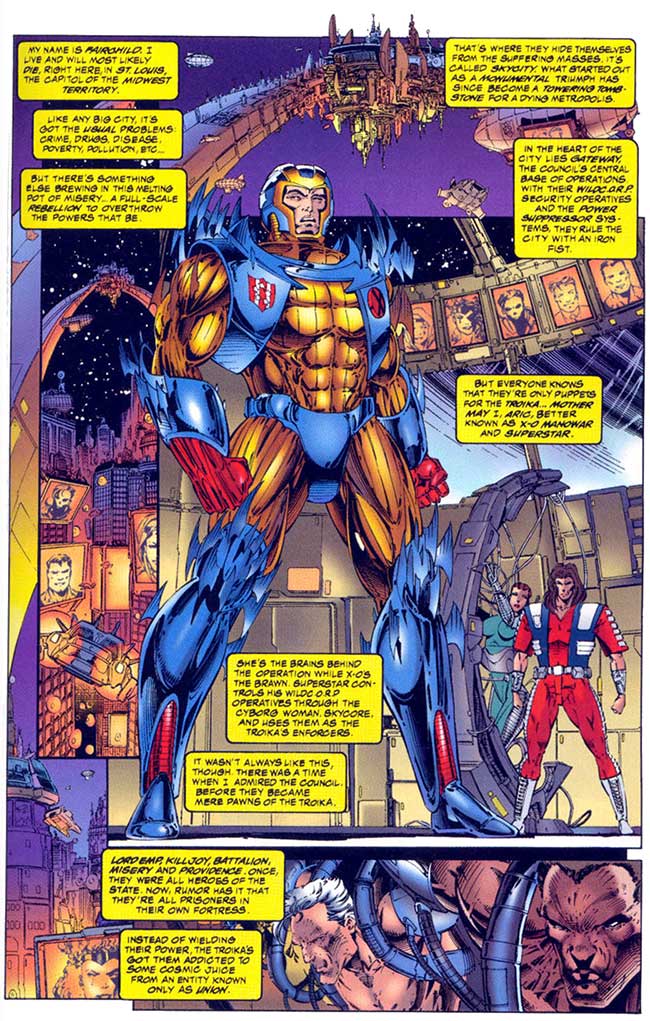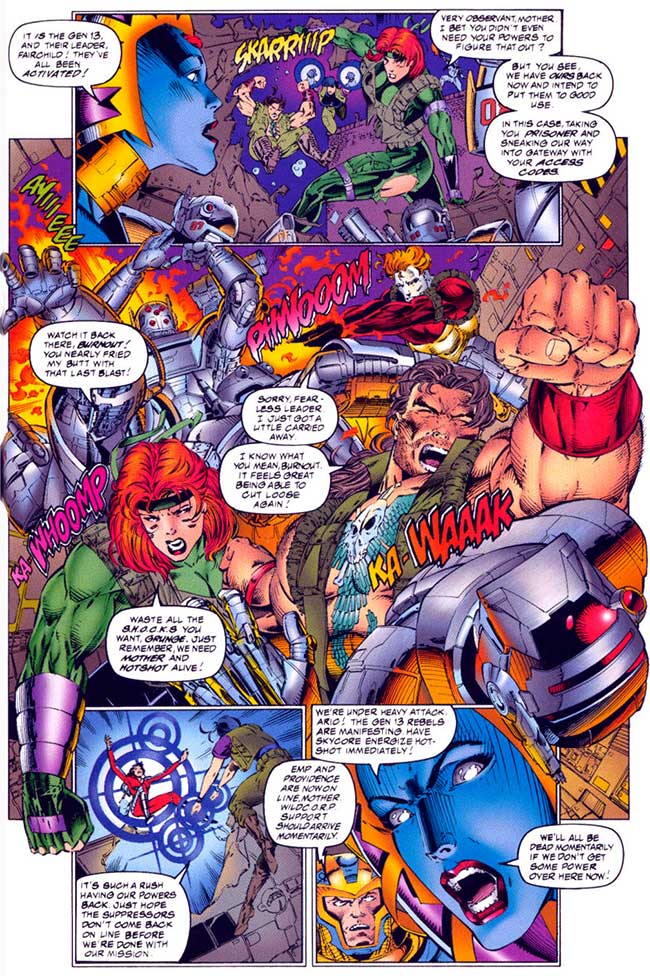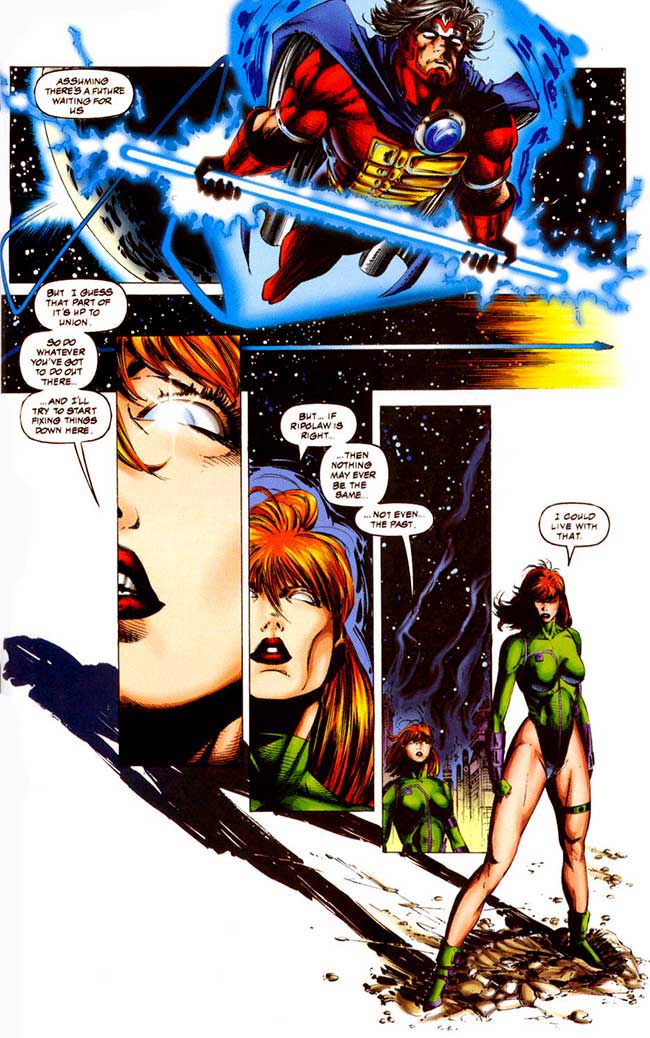Some call it the book that nearly brought down the comics industry… Your Major Spoilers (Retro) Review of Deathmate Black awaits!
 DEATHMATE BLACK
DEATHMATE BLACK
Writer(s): Brandon Choi/Eric Silvestri
Artist(s): Brandon Peterson/Brett Booth/Marc Silvestri/Jeffery Scott/Scott Clark/Greg Capullo/Jim Lee/Whilce Portacio
Inker(s): Scott Williams/Sal Regla/Alex Garner/Trevor Scott/John Dicksenson/John Tighe/Rich Johnson
Colorist(s): Joe Chiodo/Wendy Fouts/Paige Apfelbaum
Letterer: Mike Heisler
Editor(s): Robin Lane/Deborah Marvin/Cynthia Sullivan
Publisher: Image Comics/Valiant Comics
Cover Price: $4.95
Current Near-Mint Pricing: $3.50
Previously in Deathmate Black: In the early part of the 90s, the comics industry was in the midst of one of its periodic booms, with comic books skyrocketing in value on the secondary market, and hotshot creators spurring excitement about the art form. The advent of Image Comics was a huge game-changer, but other independent companies were on the scene as well, including Valiant Comics, enjoying success by building a universe around revived Gold Key Comics properties from the 1960s. When Image and Valiant announced the crossover of their universes, fandom responded with excitement, as the combination of Image’s visual dynamics with Valiant’s deep and thoughtful writing seemed like a sure thing. The first issue of Deathmate posited a meeting between Valiant Comics’ character Solar, Man of the Atom and Image Comics’ character Void in a timeless energy spiral outside of the known universe. They immediately fell in love, and their embrace created a new world, combining their realities into one. Unforunately, that world proved to be unstable and untenable and began consuming itself, dooming both universes to destruction.
It begins, as all 90s comics seemed to, in the first person…

That’s actually a pretty cool shot of future X-O Manowar but this page has so… many… WOOORDS. Deathmate Black comes out of the gate swinging, ready to give us something that fights the then-current stereotype of Image Comics as all visual flash with no thought in the writing. Unfortunately, though, this first page barrage of infodump doesn’t give us any real explanation of who the characters are, expecting that a reader will be familiar with ALL the Valiant and Image heroes from the get-go. Even as someone who was reading the majority of Valiant product in 1993, I couldn’t identify everyone on the page and 20 years out, it might as well be written in Swahili. Worst of all? This issue is narrated by Fairchild, making her very first appearance, but taking for granted that we already know her deal. The Troika (consisting of two Valiant Heroes and an Image villain) are stunned when they’re suddenly attacked by an unknown quantity, the heroes called Gen 13!

90s Image prided itself on being modern and different from the old fogies at Marvel and DC, but these heroes follow the oh-so-70s rule of announcing themselves and speaking to the next person by name, making sure that the fans understand who is whom, which is a lovely improvement over the opening pages. Of course, this reality is an alternate world, which immediately brings up the biggest problem of an altnernate universe setting: lack of meaningful stakes.

That’s the on-panel execution of Grunge, the hot new character find of 1993 right there, but having made his first appearance on page 3 of this issue, his death on page 8 doesn’t really carry a whole lot of weight. Valiant’s Turok (who, it must be noted, is a dead ringer for Warpath of Marvel’s X-Force in these pages) and Image’s Ripclaw, seemingly bonded by their Native American backgrounds, act as twin enforcers of the Troika in this world, but moments after seeing Grunge murdered, Ripclaw turns on his brother. Their battle is a pretty cringe-worthy one, as they swear upon Great Spirits and such, and use their 90s-style stereotypical dialogue against one another (Turok calls their clash “the war dance”) until one arbitrarily blows the other up. It almost doesn’t matter which. Their friendship, their conflict and their entire UNIVERSE is presented in short-hand, a string of clichés that can only be resolved in death by meaningless combat. This is the big problem with Deathmate as a series (and later big crossovers like ‘Ultimatum’, ‘Infinite Crisis’ and especially Civil War and it’s sequel): the stakes just don’t matter. Of course, rumors of Ripclaw’s death are somewhat premature, as he is saved by a mysterious woman who lives in the sewers, quickly revealed to be Voodoo of ‘WildCATs’. She entreats Ripclaw to join her underground band made up of WildCATS, Gen 13 and Cyberforce characters and SIX PAGES of dialogue follow to explain why they MUST succeed. That, by the way, is not a joke. Literally six pages of dialogue with the characters standing around, explaining what’s about to happen before we see it all happen.

Oh, and Warblade suddenly returns from the dead in there somewhere, and Voodoo’s costume is just… I can’t. The credits aren’t 100% clear on who did what, but I believe this is the work of Brett Both, but regardless, it’s an example of the specific artistic excesses people ar complaing about when they make fun of 90s art. Carnage ensues, including Turok being shot in the spin, Ballistic being shot in the face in close-up detail and a fight to make it into the Troika’s sanctum, which is where everybody get blown to smithereens, Warblade is revealed to be a traitor only maybe he’s not, and then Union is freed. Weirdly, the scene shifts to Fairchild of Gen 13 on the ground, narrating what is happening with the big, climactic explosion shown in the distance, making it clear that the end of the story is not as important as Caitlin’s sexy leotard.

Union flies off, presumably to fix the universal crazy, while Fairchild waxes philosophical to wrap up this segment, which is actually the best dialogue in the issue. Of course, things were already delayed by the time this comic came out, and additional delays on the final chapter, Deathmate Red, quickly destroyed any audience that Deathmate might have had. As such, Deathmate Black is that rare comic whose Near-Mint back issue pricing is actually LOWER than the cover price and even as the first appearance of Gen 13, it’s not at all memorable except for it’s role in popping the speculator bubble of the 1990s, with a confusing story, convoluted expository dialogue and piecemeal art by FIFTEEN artists, earning truly disappointing .5 out of 5 stars overall. At one point, I was angry about Deathmate, but 25 years later, the experience of reading it is nothing but sadness at how many of the lessons of this book have been forgotten by modern comics companies.
Dear Spoilerite,
At Major Spoilers, we strive to create original content that you find interesting and entertaining. Producing, writing, recording, editing, and researching requires significant resources. We pay writers, podcast hosts, and other staff members who work tirelessly to provide you with insights into the comic book, gaming, and pop culture industries. Help us keep MajorSpoilers.com strong. Become a Patron (and our superhero) today.
DEATHMATE BLACK
High stakes, high hopes and high expectations all fall to pieces in a confusing mish-mash of a story with wildly inconsistent art that showcases the worst of the 90s.
-
Writing.25
-
Art1.5
-
Coloring1.5



3 Comments
I was never an Image fan. Now I see why. Dialog such as “Yes, Turok!, It is I, Voodoo, back from the dead. But you’ll be joining their ranks on your journey to hell.” is horrible writing, even for comic books.
Deathmate wasn’t a love that would destroy all time, it was screwup that would destroy Valiant.
And a portion of Image…